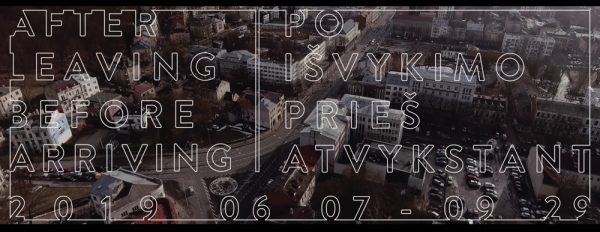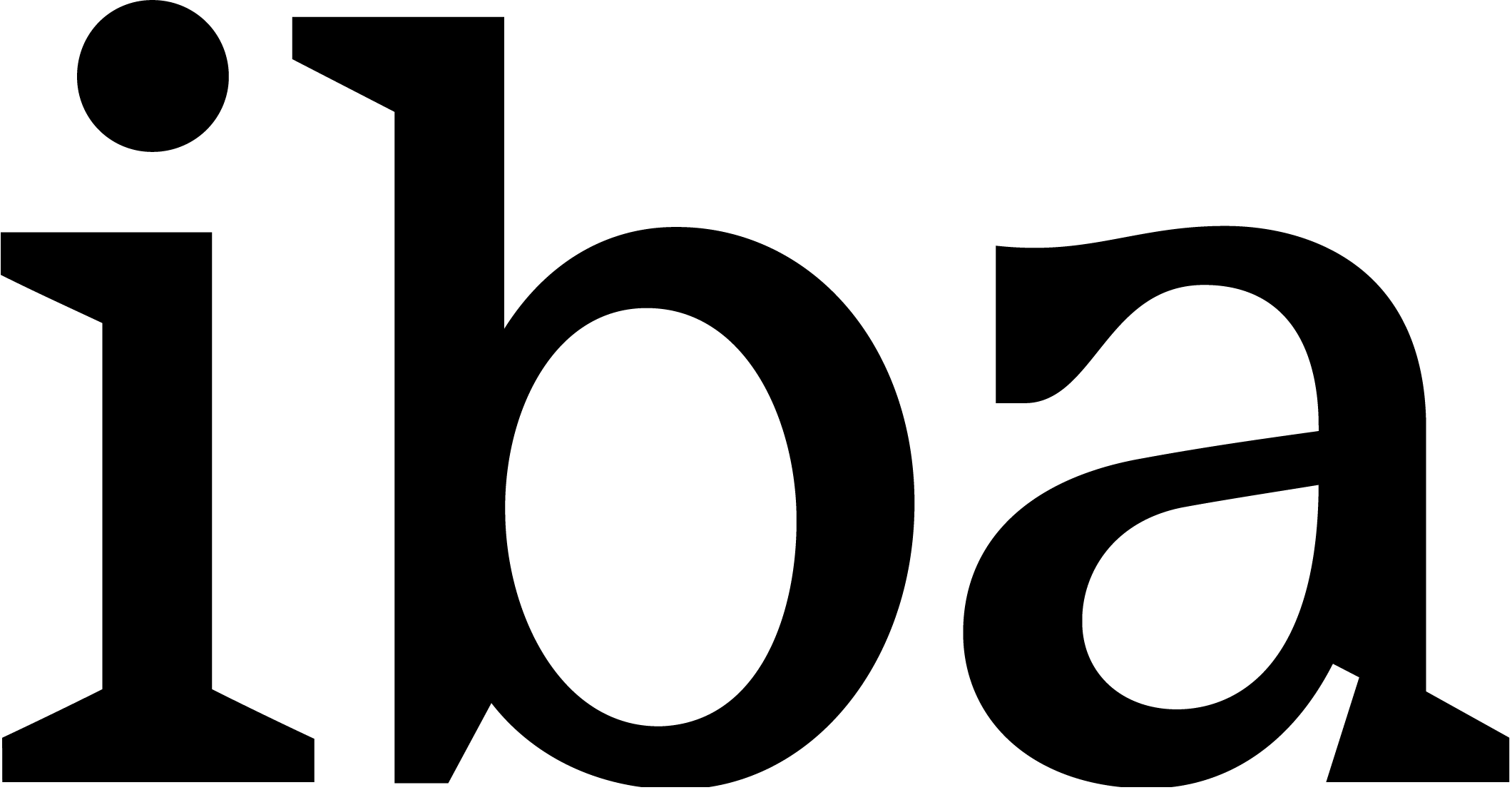The International Biennial Association (IBA) Launches a New Journal
25 February 2019Sharjah Biennial 14 Opens Today
7 March 2019
Image courtesy of Kaunas Biennial
12th Kaunas Biennial
AFTER LEAVING | BEFORE ARRIVING
June 7 – September 29, 2019
https://bienale.lt/2019/en
Kaunas Biennial announces the final list of artists for its 12th edition titled AFTER LEAVING | BEFORE ARRIVING that includes 26 artists, 9 of which will make artworks specifically for Kaunas. The exhibition includes artist from all over the world and embraces the co-curation approach and entrusts its journey to a team of five emerging and international curators: Elisabeth Del Prete, Daniel Milnes, Lýdia Pribišová, Neringa Stoškutė, and Alessandra Troncone, together with consulting curator Lewis Biggs.
Kaunas as a starting point in search of identity
For its 12th edition, Kaunas Biennial explores the journey as a metaphor in the context of the burgeoning cultural identity of a city with a complex past. Over the course of recent history, Kaunas has been caught in a state of political flux, transitioning from one regime to the next. Even during its prosperous twenty-year phase as capital city after the Polish annexation of Vilnius between 1919 and 1940 Kaunas remained in waiting, set to regain its status as second city after the liberation of the former capital. What followed, however, was occupation by the Soviet Union, then Nazi Germany, reoccupation by the Soviets, and finally the declaration of Lithuanian independence in 1990 with the country becoming a member state of the European Union in 2004. This chain of events restored not only Lithuanian national sovereignty but also the status of Kaunas as second city with the stubborn moniker “temporary capital”. This perpetual change has shrouded the city in a collective amnesia fueled by discrepant lived experiences across the different generations. Now, looking forward to its tenure as European Capital of Culture in 2022, Kaunas seeks to carve out a unified path to the future on its own terms, mythologizing its troubled past in order to write new narratives for the present.
AFTER LEAVING | BEFORE ARRIVING takes the story of Kaunas as its point of departure to examine broader notions of passage, transition, reorientation and repair in the context of individual experience and intergenerational structures. The exhibition reflects upon how the feeling of disorientation underlying contemporary existence globally intertwines with the specific socio-political realities of nation-building in the New East, where alternative European alliances are unfurling from the knots of past regimes. Alongside these historical and geopolitical narratives, the exhibition looks to more poetic strategies of depicting or perhaps overcoming the condition of precariat, with the absurd, the mystical, and the humorous serving as key tools for navigating uncertain terrain. AFTER LEAVING | BEFORE ARRIVING understands these liminal moments not just as an occasion for contemplation, anticipation, and doubt, but also as a call to action–both individual and collective–in the search for one’s place within the universe.
The list of artists and locations
Kaunas Biennial exhibition will combine public art pieces and indoor exhibition. The main places will include Kaunas Train Station, Kaunas Picture Gallery and the route consisting of places between them, including Ramybės (Serenity) Park, an underground crossing, and other places. The list of artists features 26 artists from all over the world. Part of the pieces will be created specifically for the 12th Kaunas Biennial, and adapted to the context of Kaunas.
New commissions will be made by Jasmina Cibic (Slovenia, 1979), Johanna Diehl (Germany, 1977), Inga Galinytė (Lithuania, 1988), Christian Jankowski (Germany, 1968), Laura Kaminskaitė (Lithuania, 1984), Artūras Morozovas (Lithuania, 1984), Robertas Narkus (Lithuania, 1983), Tamu Nkiwane (United Kingdom, 1990), Andrej Polukord (Lithuania, 1990), Mykola Ridnyi (Ukraine, 1985).
Another participants of AFTER LEAVING | BEFORE ARRIVING will include Céline Condorelli (United Kingdom, 1974), Ieva Epnere (Latvia, 1977), Aslan Gaisumov (Chechnya, 1991), Alberto Garutti (Italy, 1948), Francesca Grilli (Italy, 1978), Laura Grisi (Italy, 1939–2017), Bas Jan Ader (Netherlands, 1942), Taus Makhacheva (Russia, 1983), Adrian Melis (Cuba, 1985), Deimantas Narkevičius (Lithuania, 1964), Amalia Pica (Argentina, 1978), Karol Pichler (Slovakia, 1957), Ghenadie Popescu (Moldova, 1971), Naufus Ramírez-Figueroa (Guatemala, 1978), Balint Szombathy (Serbia, 1950), Gediminas and Nomeda Urbonas (Lithuania, 1966, 1968).
Slovenian performance, installation and film artist Jasmina Cibic often explores the construction of national cultures, their underlying ideologies, political goals and uses, as well as the soft power of the arts, particularly architecture. Johanna Diehl lives and works in Berlin, while creating photography and visual art. Inga Galinytė is a performing artist, devoting her performances to the topics of meditation, spiritual quest and human temporality, and for transmitting unique messages to the audience. Christian Jankowski is a contemporary multimedia artist who largely works with video, installation and photography. Laura Kaminskaitė is a young generation artist who creates conditions, objects, books and texts. Arturas Morozovas is Lithuanian photographer and photo journalist, during the last ten years he has covered some of the biggest events in Lithuania and abroad and presented sensitive social issues in conflict or post-conflict areas. Robertas Narkus describes his practice as ‘management of circumstances in the economy of coincidence’. Through the miscellaneous use of techniques, strategies, technologies and collaborations, he brings together the ordinary and the absurd to explore notions of knowledge, power games and anecdotes of neoliberal reality. Tamu Nkiwane examines his surrounding environment and considers resonances from the past through gathering and reassembling particular materials and objects. A mode of autobiographical research underpins his projects, be that a focus on the detritus of urban streets of his home town of London or, more recently, the more unfamiliar surroundings of his extended family in Zimbabwe. Painting, installation, performance, and video art by Andrej Polukord create unpredictable environments and absurd situations that produce double meaning and ambiguity. Ukraine-based artist Mykola Ridnyi, through video, sculpture and installation, performs a critical reflection on the socio-political context of the post-soviet environment. His artistic statements are often constructed using a combination of documentary films with traditional figurative sculptures and found objects.
Céline Condorelli works between London and Milan and is best known for her publications ‘The Company She Keeps’, ‘Support Structures’ and her artworks which work across the spheres of art and architecture. While also representing photography, video and film, Ieva Epnere brings here perspective and experience of Baltics, Riga. Aslan Gaisumov is developing an oeuvre that feeds on, but also transforms and transcends, personal and collective memory. His works are poised between visual immediacy and social commentary, between the momentary and the monumental. Alberto Garutti works are applying participative strategies on different levels, to engage wide spectrum of the audience, poetically and humorously addressing his interventions to climate of the socio – cultural space hosting his projects. Most of them, despite of their physical presence, are in their substance very ephemeral, based on the subtle moment of perception. Italian artist Francesca Grilli is a visual artist best known for her performances, film and installation pieces. Italian artist Laura Grisi’s work has always been considered as Italian Pop Art, though even from the outset she has actually gone beyond that category, promptly intercepting various lines of international artistic research and applying them in her own original synthesis. Bas Jan Ader is conceptual and performance artist, famous not only for his work, but also for his disappearance in 1975 attempting to cross the Atlantic Ocean. Taus Makhacheva is known predominantly for her performance and video works that critically examine what happens when different cultures and traditions come into contact with one another. Having grown up in Moscow with cultural origins in the Caucasus region of Dagestan, her artistic practice is informed by this personal connection with the co-existing worlds of pre- and post-Sovietisation. Oftentimes humorous, her works attempt to test the resilience of images, objects and bodies in today’s world. Adrian Melis takes current socioeconomic circumstances in Cuba as well as in Europe as a starting point of his work, and considers how the shifting status quo affects the lives of individuals and furthermore the ways in which societies operate within their framework. Deimantas Narkevičius is one of the most consistent and widely recognized Lithuanian artists on the international art scene. While originally trained as a sculptor, Narkevičius has mainly been working with film and video. Meanwhile, Amalia Pica is a London-based Argentinian artist who explores metaphor, communication, and civic participation through sculptures, installations, photographs, projections, live performances, and drawings. Despite studying applied arts, Karol Pichler is one of the most significant Slovak artists of neo-conceptual tendencies, working with texts, hypertext and other symbols. Many of his works are based on interaction requiring the recipient’s intensive mental and physical cooperation which is like an experience of playing a game. Ghenadie Popescu focuses on national cultural identity as well as political identity, as he has hosted a number of performances that refer specifically to the breakaway state of Transnistria, in the Eastern part of Moldova that borders Ukraine. While living and working in Guatemala, Naufus Ramírez-Figueroa is using performance, sound, drawing and sculpture. His work conjures live and sculptural representations that explore themes of loss, displacement and cultural resistance. Balint Szombathy passed through diverse strategies and tactics of avant-gardes, neo-avant-gardes, conceptual art and post-avant-garde, using languages of actuality to react to bio-political technologies of regulation and de-regulation of ruling politics. Nomeda and Gediminas Urbonai are new media artists, practitioners and theorists who have developed interdisciplinary projects over the past decade, linked to post-Soviet identity, women’s identity, actively influencing critical social discourse, exploring social forms of protest.
The journey begins
Known for reinventing itself for every edition, Kaunas Biennial has announced an open call and formed a group of international curators, advised by a consulting curator Lewis Biggs (United Kingdom). The selected team to embark on this journey includes Elisabeth Del Prete (Italy / United Kingdom), Daniel Milnes (United Kingdom / Germany), Lýdia Pribišová (Slovakia), Neringa Stoškutė (Lithuania) and Alessandra Troncone (Italy). AFTER LEAVING | BEFORE ARRIVING will take place from June 7 to September 29, 2019 in Kaunas, Lithuania.
From its humble beginnings in 1997, each Kaunas Biennial is developed from scratch, i.e. by changing its structure, terms of participation, type, place and concept of exhibition, inviting new partners, curators, artists, and other art operators to bring art into focus as a powerful and transformative force. Thanks to this approach combined with integrity and faithfulness to its principles, it is the most popular contemporary art festival in the Baltic Countries, a member of “International Biennial Association” and “Biennial Foundation” and has secured for itself a place on the map alongside other important art biennials. Since 2017, Kaunas Biennial has been the leading organization for Creative Europe Platform project MagiC Carpets, which unites 13 organizations, based in 13 different European Union and candidate countries (Lithuania, Latvia, United Kingdom, Ireland, Italy, Portugal, Czech Republic, Serbia, Georgia, Romania, Croatia, Austria, Germany) (www.magiccarpets.eu).



